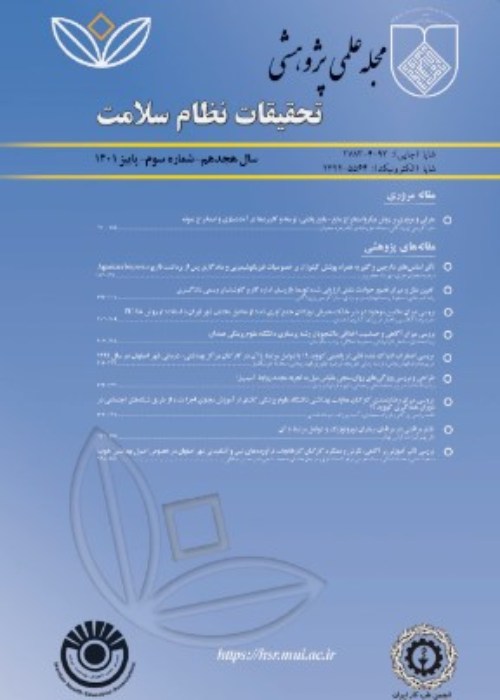The Prevalence and Effective Modifiable Factors of Self-Medication Based on the Health Belief Model among Elderly Adults in Gonabad in 2009
Author(s):
Abstract:
Background
Maintaining health, as one of the main and old concerns of mankind, is influenced by various factors. Therefore, global health-related declarations and strategies emphasize proper drug provision and consumption, as well as effective treatments. Self-medication, a controversial health issue, is three times commoner in Iran than the world average record which makes the country stand the second in Asia. Investigating the causes of self-medication based on the Health Belief Model (HBM) is a scientific and effective method to control the problem. Thus, this study attempted to identify and rank the factors associated with self-medication. Methods
In this cross-sectional descriptive-analytic study, 380 elderly adults were selected based on stratified random sampling with proper ratios. The data were collected through structured interviews using a 47-item questionnaire which covered the HBM subsections. The validity and reliability of the questionnaire were confirmed. The data were analyzed through SPSS16. Results
The age average of the participants was 66 ± 5.31. Moreover, 36.10% of the subjects were retired, 29.40% had an education of primary school level, 53.90% were under the support of social insurance, 77.60% consumed over-the-counter drugs, 85.30% kept drugs at home, 42.30% took sedative drugs, and 15.10% consumed psychiatric drugs. The score for perceived sensitivity and barriers were 50.21 and 70.23, respectively.Self-medication was found to be significantly related with gender, marital status, and education level. In addition, a successful previous experience of self-medication and considering drugs as harmless were suggested as the main causes of self-medication. Furthermore, mass media were discovered to be the most effective solution to prevent self-medication. Conclusion
In this study, the prevalence of self-medication was high and the alterable factors were in undesirable conditions. Although the subjects did not show a minimum score of 50% in different subsections of HBM, the self-efficacy average was desirable which could lead a false sense of confidence and increased self-medication.Language:
Persian
Published:
Journal of Health System Research, Volume:7 Issue: 4, 2012
Page:
411
magiran.com/p958168
دانلود و مطالعه متن این مقاله با یکی از روشهای زیر امکان پذیر است:
اشتراک شخصی
با عضویت و پرداخت آنلاین حق اشتراک یکساله به مبلغ 1,390,000ريال میتوانید 70 عنوان مطلب دانلود کنید!
اشتراک سازمانی
به کتابخانه دانشگاه یا محل کار خود پیشنهاد کنید تا اشتراک سازمانی این پایگاه را برای دسترسی نامحدود همه کاربران به متن مطالب تهیه نمایند!
توجه!
- حق عضویت دریافتی صرف حمایت از نشریات عضو و نگهداری، تکمیل و توسعه مگیران میشود.
- پرداخت حق اشتراک و دانلود مقالات اجازه بازنشر آن در سایر رسانههای چاپی و دیجیتال را به کاربر نمیدهد.
In order to view content subscription is required
Personal subscription
Subscribe magiran.com for 70 € euros via PayPal and download 70 articles during a year.
Organization subscription
Please contact us to subscribe your university or library for unlimited access!



